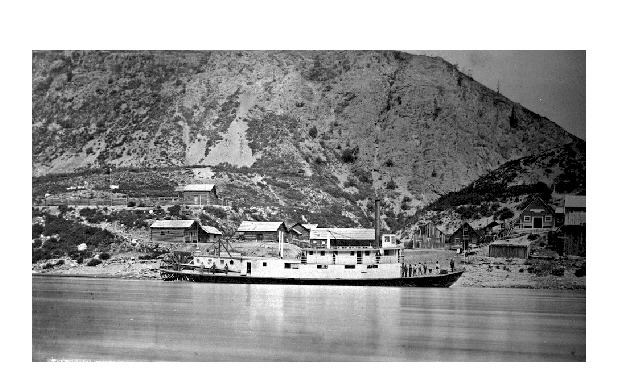 | ||
Steamboats operated on the Stikine River in response to gold finds in along that river and in the Cassiar Country of northwestern British Columbia, Canada.
Contents
Early activity
The Stikine River in northern British Columbia and Alaska has had three distinct periods of riverboat activity. The first was during the Stikine Gold Rush of 1862, the second during the Cassiar Gold Rush of the 1870s, and the third was in relation to the Klondike and Atlin Gold Rushes from 1898 onwards.
Captains William Moore and William Irving vied for river traffic and fees during the first gold rush. Both were indomitable pioneers chasing gold rushes up the continent from Oregon to Washington, Idaho and British Columbia. Moore brought his steamer the Flying Dutchman up the river in 1862 as an exploratory side trip to the Cariboo Gold Rush. The Collins Overland Telegraph Company steamer Mumford ventured up the river in 1866. Another rush in 1874 to Dease Lake brought the Gem, Western Slope and the Gertrude.
Gold rush of 1898
With the discovery of gold at Dawson City, Yukon on Rabbit Creek in 1897, pandemonium erupted on the Pacific Coast, as unemployed, young, adventurous headed north to seek their fortune. Travelling by boat from Seattle and the 49th Parallel, Sourdoughs embarked for the Lynn Canal and the Chilkoot Pass. Strangely, materials heading north had to be transhipped first into American territory, unloaded on a beach, hauled overland back into Canadian territory, and then by small boat down the Yukon River to Dawson. Canadian Merchants sought an "All Canadian" route whereby goods could travel by river steamer from Vancouver or Victoria, in bond, pass US territory at Wrangell, and churn up the Stikine river 130 miles to the head of navigation at Glenora, near Telegraph Creek. Some two dozen boats were built or spent a summer or two on the river.
However, the feasibility of the route proved less than advantageous than the Lynn Canal route at Skagway.The packers would have to move supplies 150 miles north along the Collins Overland Telegraph line to Teslin Lake, and thence down the Yukon to their destination. The completion of the White Pass and Yukon Railway finished dreams of the Teslin route and the steamers moved off the Stikine to other routes. The SS Moyie was built in Toronto in sections to run on the Stikine route. As the project never materialized, the Moyie never saw the Stikine but saw service elsewhere for nearly 60 years.
The Hudson's Bay company maintained a trading post and it needed access. The HBC ran the steamer Port Simpson on the Stikine until 1916.
Boats
The following steamboats and related vessels operated on the Stikine River. Codes for this table are: A = abandoned; B = burned; C = converted; D = dismantled; R = Renamed; S = Sank; T = Transferred; W = Wrecked; X = Explosion of boiler.
